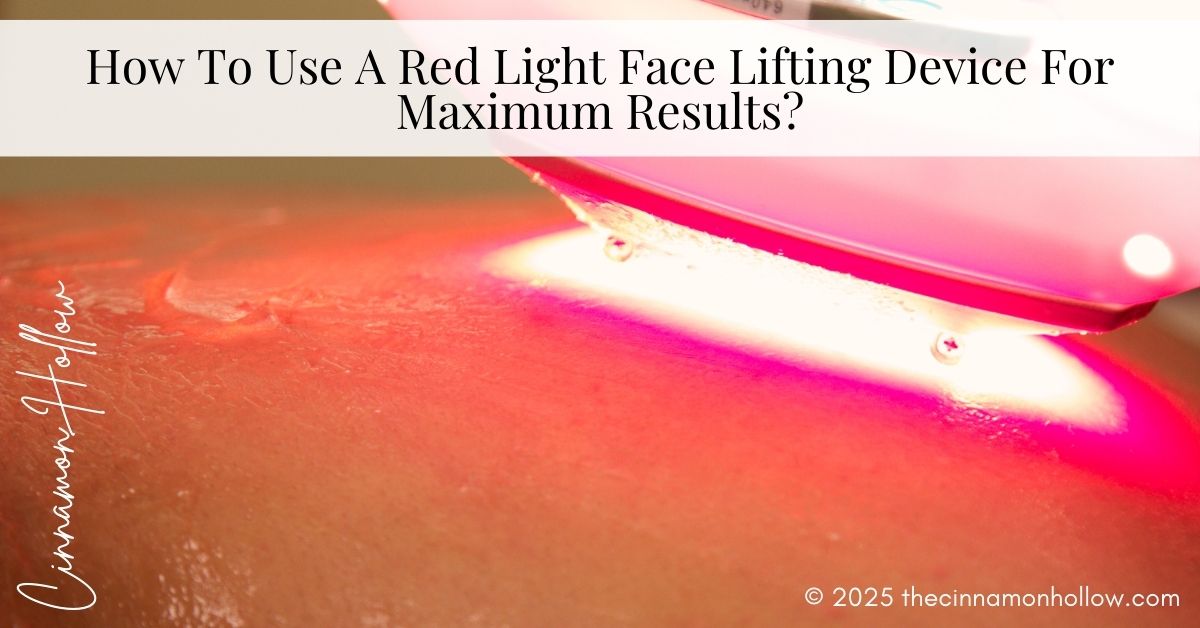Red light therapy has gained popularity as a non-invasive skincare treatment. This innovative approach uses specific wavelengths of light to stimulate collagen production and improve skin texture. A red light face lifting device offers a convenient way to enjoy these benefits at home.
For optimal results, use your red light face lifting device consistently for 10-20 minutes per session, 3-5 times a week. Start with clean, dry skin and position the device about 15-20 cm away from your face. Move it slowly across different areas, focusing on problem spots like fine lines or uneven tone. Remember to protect your eyes with goggles or keep them closed during treatment.
Patience is key when using a red light face lifting device. While some users notice immediate improvements in skin tone and texture, significant results typically appear after 4-6 weeks of regular use. Combine your red light therapy with a healthy lifestyle, including proper hydration and a balanced diet, to maximize its skin-rejuvenating effects.
Key Takeaways
- Use the red light face lifting device consistently for 10-20 minutes, 3-5 times weekly
- Start with clean skin and maintain proper distance for safe and effective treatment
- Combine red light therapy with a healthy lifestyle for optimal skin-rejuvenating results
Understanding Red Light Therapy And Selecting The Right Device
Red light therapy utilizes specific wavelengths of light to stimulate cellular processes in the skin. Choosing an appropriate device is crucial for achieving optimal results in skincare and anti-aging treatments.
Basics Of Red Light Therapy
Red light therapy employs wavelengths between 600-850 nanometres to penetrate the skin. This range includes visible red light and near-infrared light. These wavelengths stimulate mitochondria, the powerhouses of cells, to boost energy production and promote healing.
Red light therapy can enhance collagen production, reduce inflammation, and improve skin texture. It may help with various skin concerns, including fine lines, wrinkles, and uneven skin tone. The treatment is non-invasive and generally considered safe for most skin types.
Consistent use is key for noticeable results. Many users report improvements after several weeks of regular treatments. It’s important to follow device instructions and not exceed recommended exposure times.
Choosing An At-Home Red Light Therapy Device
When selecting a red light therapy device for home use, consider the treatment area and specific skin concerns. Handheld wands are suitable for targeted treatments, while masks or panels cover larger areas.
Look for devices with appropriate wavelengths, typically in the 630-660 nm range for red light and 810-850 nm for near-infrared. FDA-cleared devices offer assurance of safety and efficacy.
Popular options include:
- LED masks for full-face treatments
- Handheld devices for spot treatments
- Panels for larger body areas
Consider factors such as power output, treatment time, and ease of use. Higher-quality devices often provide more consistent results but may come at a higher cost.
It’s advisable to consult a dermatologist before starting any new skincare regimen, especially for those with sensitive skin or existing skin conditions.
Maximizing The Benefits Of Red Light Therapy
Red light therapy offers numerous benefits for skin health and overall well-being. Proper usage techniques and complementary practices can significantly enhance its effectiveness.
Optimizing Treatment Time And Frequency
Consistency is key when using red light therapy devices. Aim for daily treatments of 10-20 minutes, depending on the device’s power output. Start with shorter sessions and gradually increase duration as your skin adjusts. For optimal results, use the device 5-7 times per week.
Target specific areas of concern, such as fine lines or areas of inflammation. Hold the device 6-8 inches from your skin for best light penetration. Move the device slowly across your face in circular motions.
Results may take 4-6 weeks to become noticeable. Be patient and maintain a regular routine. Track progress with photos to observe improvements in skin texture and elasticity.
Enhancing Skin Care Through Complementary Practices
Pair red light therapy with a comprehensive skincare routine for maximum benefits. Cleanse your face thoroughly before treatments to remove makeup and impurities. Use a gentle, pH-balanced cleanser to avoid irritation.
Apply serums containing peptides or hyaluronic acid after your red light session. These ingredients work synergistically to boost collagen production and hydration. For sensitive skin, patch test new products before use.
Incorporate facial massage techniques to improve circulation and lymphatic drainage. Use light, upward strokes to enhance the lifting effect of red light therapy. Stay hydrated and maintain a balanced diet rich in antioxidants to support skin health from within.
Safety And Maintenance Of Your Device
Protect your eyes during treatments with the provided goggles or by keeping your eyes closed. Avoid using red light therapy if you have photosensitivity or are taking medications that increase light sensitivity.
Clean your device regularly with a soft, lint-free cloth to maintain its effectiveness. Check the USB cable for any damage before each use. Store the device in a cool, dry place when not in use.
Follow the manufacturer’s guidelines for treatment times and intensity levels. Most devices have a compact design for easy storage and travel. Replace LED bulbs as recommended to ensure optimal light output and results.
Conclusion
Red light therapy devices offer a promising at-home treatment for facial rejuvenation. Consistent use, proper technique, and adherence to safety guidelines are crucial for achieving optimal results. Users should select high-quality devices with appropriate wavelengths and follow recommended treatment times. With patience and diligence, individuals may experience improvements in skin texture, tone, and overall appearance.


